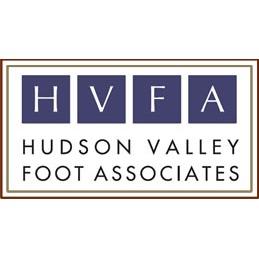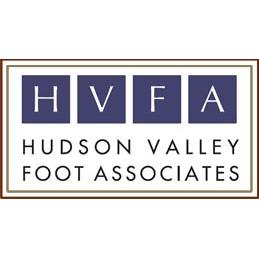DON’T IGNORE PAIN
Foot pain is not a normal consequence of growing older, so don’t resign yourself to aching and suffering. Pay attention to what your feet are telling you, and see a foot and ankle surgeon for an accurate diagnosis when you experience pain.
EXAMINE YOUR FEET
Make regular foot self-examinations
a routine at home. At the first sign of bumps, lumps or other changes in your feet, make an appointment with
your foot and ankle surgeon for
further examination.
EXERCISE
Simple stretching exercises can help you maintain strength and mobility in your feet and ankles, as well as provide pain relief. Talk to your foot and ankle surgeon about appropriate exercises to fit you. (Acfas)
If you are feeling pain or discomfort please don’t hesitate to call our office. We care for your feet!
Fall is the time to clear out the remains of summer gardens from the yard. Keep your feet and ankles safe from injury by following these helpful tips:
Wear Appropriate Shoes for the Task:
No matter how warm it is, do not wear sandals. Wear sturdy leather shoes with support to protect your feet from sharp objects, including the blades from power equipment.
Keep Children Away from Power Equipment: Protect your kids and others from severe trauma. Leaf blowers, power lawnmowers and chainsaws should not be left out where kids are playing or where other inexperienced users have access.
Do Not Work on Wet Surfaces: You could easily slip and injure an ankle when carrying heavy loads across wet grass or leaves in your yard.
Remember, yard work is a workout! Warm up and perform stretching exercises before starting yard work, just as you would before working out at the gym. By stretching prior to activity, you can help avoid stressing tendons and muscles in the foot, ankle and calves.
If you are experiencing foot pain or discomfort don’t hesitate to call our office. We care for your feet!
(Acfas)
A bunion (also referred to as hallux valgus or hallux abducto valgus) is often described as a bump on the side of the big toe. But a bunion is more than that. The visible bump actually reflects changes in the bony framework of the front part of
the foot. The big toe leans toward the second toe, rather than pointing straight ahead. This throws the bones out of alignment – producing the bunion’s “bump.” Bunions are a progressive disorder. They begin with a leaning
of the big toe, gradually changing the angle of the bones over the years and slowly producing the characteristic bump, which
becomes increasingly prominent. Symptoms usually appear at later stages, although some people never have symptoms. If you are having discomfort from a bunion don’t hesitate to call our office for an appointment. We care for your feet!
(acfas)
Athlete's foot is a skin infection caused by fungus. A fungal infection may occur on any part of the body; on the foot, it is called athlete’s foot, or tinea pedis. Fungus commonly attacks the feet because it thrives in a dark, moist and warm environment, such as a shoe.
Fungal infections are more common in warm weather when feet tend to sweat more. Fungus thrives in damp areas, such as swimming pools, showers and locker rooms. Athletes often have sweaty feet and use the facilities where fungus is commonly found, thus the term "athlete's foot."
Athlete's foot usually produces itchy, dry, scaling skin. It is commonly seen on the soles of the feet and in between the toes. In advanced cases, inflammation, cracks and blisters may form; an infection caused by bacteria can also result. The fungus can spread to other areas of the body, including toenails.
Avoiding walking barefoot combined with good foot hygiene can help reduce the spread of the fungus. Feet should be washed every day with soap and water and thoroughly dried, including between the toes. Feet should be kept as dry as possible. If your feet sweat a lot you may need to change your socks during the day. Antifungal powders, sprays and/or creams are often used to treat athlete's foot. If you are struggling with Athlete's Foot don't hesitate to call our office for an appointment. We care for your feet!
(acfas)
Fallen arches is a term commonly used to describe a flatfoot condition that develops during adulthood. This should not be confused with other causes of flatfoot lthat may develop during childhood or adolescence.
Most cases of fallen arches develop when the main arch-supporting tendon (the posterior tibial tendon) becomes weakened or injured, causing the arch to gradually become lower. With time, the shape of the foot changes and secondary symptoms start to appear.
Common problems associated with fallen arches include plantar fasciitis, tendonitis, increased fatigue and arthritis of the foot and ankle.
If you think you may have fallen arches, don’t hesitate to call our office for an appointment. We care for your feet!
If your lower back has been hurting, and you do not remember doing anything to injure it, the source of your pain could be your feet. Foot pain is something that many people try to ignore. After all, doesn’t everyone’s feet hurt now and then? But if foot pain is something that has been with you for quite a while, it could be causing problems in your ankles, knees, hips and even your back.
That old song, “The leg bone’s connected to the thigh bone. The thigh bone’s connected to the hip bone…,” tells the whole story. Our bodies are like a chain, with one link—or bone—connecting at the joint to another link. Think about what would happen if the first link in the chain was out of position. The point at which it meets the next link would eventually overstress that link and adversely affect the entire chain.
That is what happens when we have foot pain. If the normal way of walking is painful, we instinctively change our walking pattern. Say you have arthritis and your big toe joint hurts, so you change your gait to avoid bending the joint when you walk. Changing your gait changes the mechanics of your ankle joint, eventually causing ankle pain. This change in your walking pattern can also affect the whole chain of your lower body from the ankle, to the knee, to the hip and then to the lower back.
When foot pain or a foot deformity causes you to change the way you walk, it changes the way the bones of all those other joints move with each other. Cartilage in the joints can wear down, ligaments and tendons can be stressed beyond their normal range and arthritis can set in.
If your feet or ankles are not working right, do not ignore them. Contact our office for an evaluation. Your back (and knees and hips) will thank you!
(ACFAS)
As a general rule, replace your running shoes after 300 to 500 miles (three to six months, depending on how much you run).
This varies on the weight and size of the runner. Lighter runners can get new shoes at the upper end of the recommendation while heavier runners should consider replacement shoes closer to 300 miles.
Injuries that are seen when shoes are not replaced frequently are: shin splints, heel spurs, plantar fascitis and stress fractures.
One of the biggest keys to running injury free after you figure out form and strengthen your core is the condition of your shoes!
Winter can be dangerous for your feet if you’re living with diabetes. Colder temperatures mixed with poor blood circulation and possible nerve damage in your extremities make your feet vulnerable to serious complications or infection. To keep your feet healthy and safe this winter, take these precautions.
Watch Out for Snow Moisture that collects on your socks and in between your toes can form bacteria and lead to infection. If you walk in heavy snow or slush, be sure to change out of your wet socks as soon as possible and towel dry your feet paying close attention to in between your toes.
Moisturize : Use a daily moisturizer to avoid dry feet and to keep your skin from itching or cracking.
Avoid Direct Heat: Keep your feet away from direct heat. Normal winter activities like warming your feet by a fire or cranking up the foot heater in your car can pose problems. The numbness caused by nerve damage can make it impossible to feel the heat on your feet and could lead to second- or third-degree burns. It’s best to keep your feet away from direct heat and to avoid warming aids such as electric blankets, heated shoe inserts or heating pads and to keep your feet out of hot water. To make sure, test your bath water with your hand or a thermometer first to make sure it’s safe for your feet.
Proper Shoes: Wearing well-fitting shoes with supportive soles and a roomy toe box to reduce cramping. Keep in mind how different sock textures will affect the wear and walking conditions during the winter months.
Regular Exams: Be sure to contact our office to regularly schedule foot exams as they can help spot any diabetes-related foot issues early and avoid further complications. We care for your feet! (Acfas)
There is a common misconception that growing older means having to cope with sore feet. The nation’s foot and ankle surgeons disagree and believe seniors shouldn’t be resigned to accepting foot pain as a consequence of aging. Pain from common foot and ankle conditions can be treated successfully with proper diagnosis, non-surgical and surgical treatments, and rehabilitation to help seniors stay active, exercise regularly and maintain a healthy lifestyle. If you’re experiencing pain don’t hesitate to call our office for an appointment! We care for your feet!


